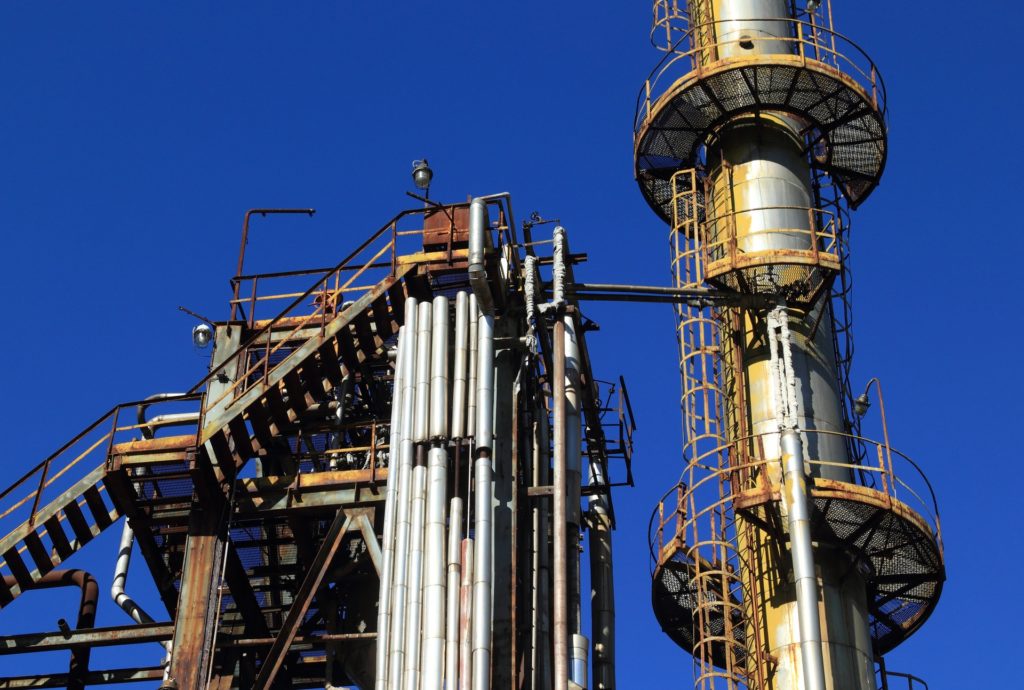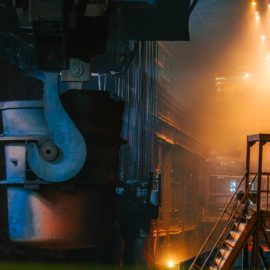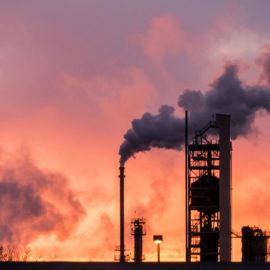
The chemical industry wonders why they find opposition to their operations. This is a case in point!
The chemical plant explosion that recently injured at least six people, forced several schools into lockdown and sent a dark plume of smoke over Lake Charles was terrifying for Roishetta Ozane, but it didn’t surprise her. “The flares, the loud noises, the explosions that shake your home – we’re used to that,” said Ozane, who lives four miles from the plant. Also not surprising: This latest incident happened at a facility owned by Westlake Chemical, a Houston company with four large plants that store billions of pounds of toxic chemicals just outside Lake Charles. A review of federal and state records reveals that Westlake has a long track record of chemical spills, fires, air quality violations, failed safety inspections, and accidents that have burned and battered dozens of workers in Louisiana. Despite repeated promises to clean up its act, two of Westlake’s most dangerous incidents happened over the past five months. The Jan. 26 tank explosion at the Lake Charles South complex was almost identical to one that occurred just five months ago at Westlake Petrochemical, a large plant about five miles away. Broken bones, burns and busted eardrums were among the injuries suffered by at least 23 workers during the Sept. 27 blast. “There is a pattern going on with Westlake,” said Kyle Findley, an attorney representing several injured workers. “But the common theme is always that something could have been done to prevent these events.”
nola.com
The potential of bigger and much worse problems still exist at this plant.
Westlake’s facilities have the potential to produce much bigger disasters – ones that could imperil tens of thousands of people. Lake Charles South has the potential to release enough toxic gas to harm more than 210,000 people, according to company estimates in a special “risk management plan” The Times-Picayune | New Orleans Advocate was permitted to view after a lengthy Freedom of Information Act request process. Federal regulators require such plans for facilities that store large amounts of extremely hazardous substances. The plans, which cannot be photographed or copied for security reasons, spell out “worst case scenarios” in which large-scale chemical disasters are triggered by fires, floods, hurricanes and other hazards. In the 2021 plan for Lake Charles South, Westlake told regulators that an accident could spew up to 660,000 pounds of toxic gas across 25 miles — an area that encompasses all of Lake Charles and more than a dozen smaller towns. A large share of the release would likely be chlorine gas, a substance used as a weapon in World War I. It can cause lung damage; skin, eye, nose, throat irritation and other health problems. An unknown amount of chlorine gas blanketed Lake Charles when Hurricane Laura triggered a fire and vast plume of greenish-gray smoke at the BioLab Inc. complex, one of Lake Charles South’s neighbors, in 2020. Most of the city’s residents had evacuated prior to the hurricane, and no serious injuries were reported. Another nearby Westlake facility has an overlapping risk zone. Lake Charles North, a vinyl chloride monomer producer about two miles from Lake Charles South, could harm about 211,000 people with a large release of hydrogen chloride, a gas that can corrode eyes and lungs.
What a good neighbor, one who gives and gives. Lake Charles is home to far more than Westlake Chemical.
The Lake Charles area has more than 40 facilities listed in the U.S. Environmental Protection Agency’s Toxics Release Inventory, a database in which plants self-report hazardous chemical releases in the air, in water, or on land. The frequency of mishaps and the looming prospect of something much worse keeps residents on edge, Ozane said. “Westlake has had so many violations throughout the years, and we don’t see things getting better,” she said. “And their places are huge. When something blows up at them, people around here think everything’s going to blow up.” Just before 11 a.m. on Jan. 26, a loud boom shook the Lake Charles area. A thick blanket of black smoke swept over the Westlake industrial area before forming a mushroom-shaped cloud visible several miles away. More than 7,000 students in more than a dozen schools were ordered to shelter in place to prevent exposure to toxic gases.
While the cause is not known, the location is well known.
While the cause of the explosion is still unclear, the source was obvious: a storage tank at the Lake Charles South complex on PPG Drive. The million-gallon tank had been used to store ethylene dichloride, a chemical that can harm the human nervous system, liver and kidneys, and can cause breathing and heart problems, nausea and vomiting if inhaled. The tank was nearly empty, but the fumes trapped inside are highly flammable, a Westlake spokesman said. Air monitoring stations near the plant indicated air quality remained safe immediately after the explosion, a state Department of Environmental Quality spokesman said. Derwin Degruy was working as a welder at the Lake Charles South complex when the tank exploded. The force and the intense heat and flames knocked Degruy, a New Orleans native and former Delgado Community College student, off his feet. “Disoriented and fearing for his life, (Degruy) fled from the explosion in an attempt to escape the danger,” his lawyers wrote in a lawsuit filed two days after the explosion. Degruy was one of five workers hospitalized. He suffered injuries to his lungs, head, neck, shoulders and back. A sixth injured worker was treated near the explosion.
Westlake would not comment but said that the health and safety of their employees is paramount. Is it or is making money their goal?
Westlake declined to comment for this story. In a statement after the Jan. 26 explosion, a company spokesperson stressed that Westlake’s “first priority was the safety of our employees and contractors, and the communities around the plant,” and offered condolences to injured workers. “Our thoughts and prayers are with the injured individuals and their families,” the statement said. More than three times as many workers were injured in the eerily similar Sept. 27 blast at Westlake Petrochemical, which manufactures ethylene, styrene and polyethylene. While Westlake initially reported six injuries, at least 23 workers are suing the company for a range of wounds, including “permanent disfigurement” from burns to faces and arms. Gregory Green, a Houston resident who was operating a pressure washer at Westlake Petrochemical, was “engulfed in flames and knocked unconscious” by the blast, his lawsuit says. His list of injuries include a broken leg and pelvis, ruptured eardrums and second-degree burns on 40% of his body.
The three lawsuits all cite the same faults Westlake keeps doing.
Three lawsuits, which each seek damages of at least $1 million, allege Westlake failed to maintain a safe workplace, including: failure to inspect and properly attend to poorly maintained equipment, causing leaks of flammable gases, failure to properly design, build and secure pipelines that leaked flammable gases and failure to limit welding and other “hot work” that ignited flammable gases leaking from faulty equipment. “Both events could have been prevented if Westlake didn’t have hot work going on next to flammable gases leaking,” Findley said. “This is not a unique facility. Many plants produce these products. They have similar engineering and similar safety precautions. What stands out is that one company has had two explosions in one area in a very short timeframe.” The two explosions came just months after Westlake agreed to pay the DEQ $35,000 to settle several safety and environmental violations dating back to 2010 at Lake Charles South.
Shoddy repair work appears to be the root cause for some of the incidents.
One of the most dangerous incidents listed in the settlement appears to be rooted in shoddy repair work. According to the DEQ, workers at Lake Charles South found flammable chemicals leaking from a vinyl chloride unit in late 2012. They installed a temporary clamp over the leak, but a week later the clamp was also found to be leaking. Workers put a larger clamp on the first clamp. On Christmas Eve, the entire system failed, resulting in a fire that hospitalized at least one worker and released more than 54,000 pounds of hydrogen chloride, vinyl chloride and other toxic gases. Westlake promised to upgrade its equipment and revise its maintenance and operating procedures.
The facility does not seem to learn from its errors and appears to be getting worse.
The facility’s record didn’t improve. Over the next year, DEQ inspectors noted five violations of accident prevention rules, eight mandatory inspections that were not conducted, improperly installed valves and vents, and at least 11 chemical leaks. Amid this spate of problems at Lake Charles South, the DEQ and Westlake came to a settlement on another batch of chemical leaks, safety violations and other incidents going back another decade. The $400,000 Westlake agreed to pay in this earlier settlement came with a stipulation that the company had to spend about $200,000 for a leak detection and repair program. But the leaks continued. A month after the agreement, a pipe ruptured, triggering another fire and spewing 180,000 pounds of hydrogen chloride, vinyl chloride and other toxic gases. The fire’s toxic smoke forced the shutdown of Interstate 10 and the evacuation of about 130 people at a neighboring plant. About 5,000 residents downwind of Lake Charles South were urged to shelter indoors. One resident was hospitalized and about 30 others sought treatment for smoke inhalation and chemical exposure, according to EPA records.
The incidents continue. When is enough enough?
In February 2015, the plant’s equipment failed again, this time releasing chlorine gas. Emergency alerts went out and nearby residents and workers took cover. Afterward, Westlake proposed several changes, including better worker training, equipment upgrades and improved maintenance procedures. A few months later, the EPA hit Westlake with one of the company’s largest fines ever – $997,000 for a host of violations at Lake Charles South, including repeated failures to inspect pipes and other equipment. Echoing DEQ’s 2013 order, the EPA ordered Westlake to invest at least $100,000 to upgrade the plant’s leak detection systems.
Westlake has a number of plants and none seem to be running safely.
Westlake Petrochemical, site of the September explosion, also has a record of dangerous mishaps. In a 2019 settlement that cost the company $95,000, the DEQ said the plant had repeated toxic gas leaks caused by malfunctions and faulty or missing valve closures. The plant had repeatedly relied on flaring, a process used to burn dangerous chemicals when equipment breaks down. While the flares were aimed at avoiding larger releases, the burning of the chemicals exceeded state emission rates. EPA records indicate equipment failures at Westlake Petrochemical caused fires in 2008 and 2009 and an ethylene leak that lasted for more than two days. Westlake Polymers, a 56-year-old polyethylene plant that sits between Westlake Petrochemical and Lake Charles South, was cited by the DEQ for inadequate emissions monitoring, excess emissions and leaks that were discovered but not fixed for several days. In one 2007 case, a production unit was found to be leaking toxic chemicals but repairs were delayed for more than 15 days because the plant had run out of parts, according to the 2019 settlement. Water pollution has also been a chronic problem at Westlake’s plants. The DEQ and Westlake have been haggling for years over water-related violations at the company’s plants in the Lake Charles area. In a 2016 compliance order, DEQ documented several instances of wastewater overflows caused by heavy rainfall, inaccurate water quality testing and chemical spills dating back to 2002. Westlake Polymers appears to have the worst water pollution record of the four plants near Lake Charles. It has spilled oil, bleach and plastic pellets, known as nurdles, into Bayou d’Inde, which has been considered unsafe for swimming and fishing since the 1980s, and other small waterways linked to the Calcasieu River. Fish kills have been traced to the facility at least twice.
It is not just Westlake in Lake Charles but Westlake in the state.
Other parts of the state have been shaken by accidents at Westlake-operated plants. In 2012, an explosion at a Westlake vinyl plant in Ascension Parish sent a cloud of toxic gas and hydrochloric acid over the town of Geismar. The blast shut roads, closed a 34-mile stretch of the Mississippi River and forced nearby residents to take shelter for more than two hours. The plant has continued to have accidental leaks, including one from corroded pipes in 2019 that released more than 4,000 pounds of ethylene dichloride, a flammable and toxic gas. Environmental groups say Westlake has been allowed to break health and safety rules and harm Louisiana communities without suffering significant consequences. “All they get are slaps on the wrist, over and over,” said Darryl Malek-Wiley, an environmental justice organizer with the Sierra Club. “They get a $400,000 fine, but so what? That might be a lot of money for you or me, but to a company making millions or tens of millions every year, it’s pocket change.”
Westlake is making money, record money. What are a few incidents if we can make this much? Just pay them.
According to Westlake’s most recent earnings report, the company raked in a “record income” of $2 billion last year. A DEQ spokesman said the agency’s enforcement actions against Westlake have reflected the seriousness of the company’s violations. “The department’s response is that the settlement agreement and/or civil penalties are equitable for the violations,” DEQ said in a statement. The agency declined to elaborate further. Westlake’s facilities stand out among other petrochemical plants for their advanced age and states of disrepair, environmental groups say. As DEQ has pointed out in settlements with the company, a lack of maintenance and facility improvements have contributed to many leaks and other accidents. “They’re old, dirty and nasty,” said Russel Honoré of the Green Army environmental group. “Westlake’s been leaching all kinds of stuff into ponds and bayous and now they’re exploding, and the state of Louisiana still allows them to operate.” Westlake does appear to have a worse track record than other large petrochemical companies with large plants in Louisiana. According to the Corporate Research Project’s violation tracker, Westlake racked up at least 16 serious environmental and safety violations over the past 20 years. Dow, the largest petrochemical company operating in the state, had 11. BASF and Sasol, also among the top petrochemical employers in Louisiana, each had fewer than five. Honore said federal and state regulators should increase the number of air monitors to catch more toxic releases and put a full-time government inspector in each plant. He noted that meat-processing plants must have an inspector present to operate. “You’ve got to have an inspector to cut meat, so why can’t we do the same at a plant that’s doing stuff that can kill and injure people in our communities?” he said. “What more needs to happen? What more do we need to know? Because with Westlake, the record speaks for itself.”
All in all, good reason not to live in Lake Charles!



